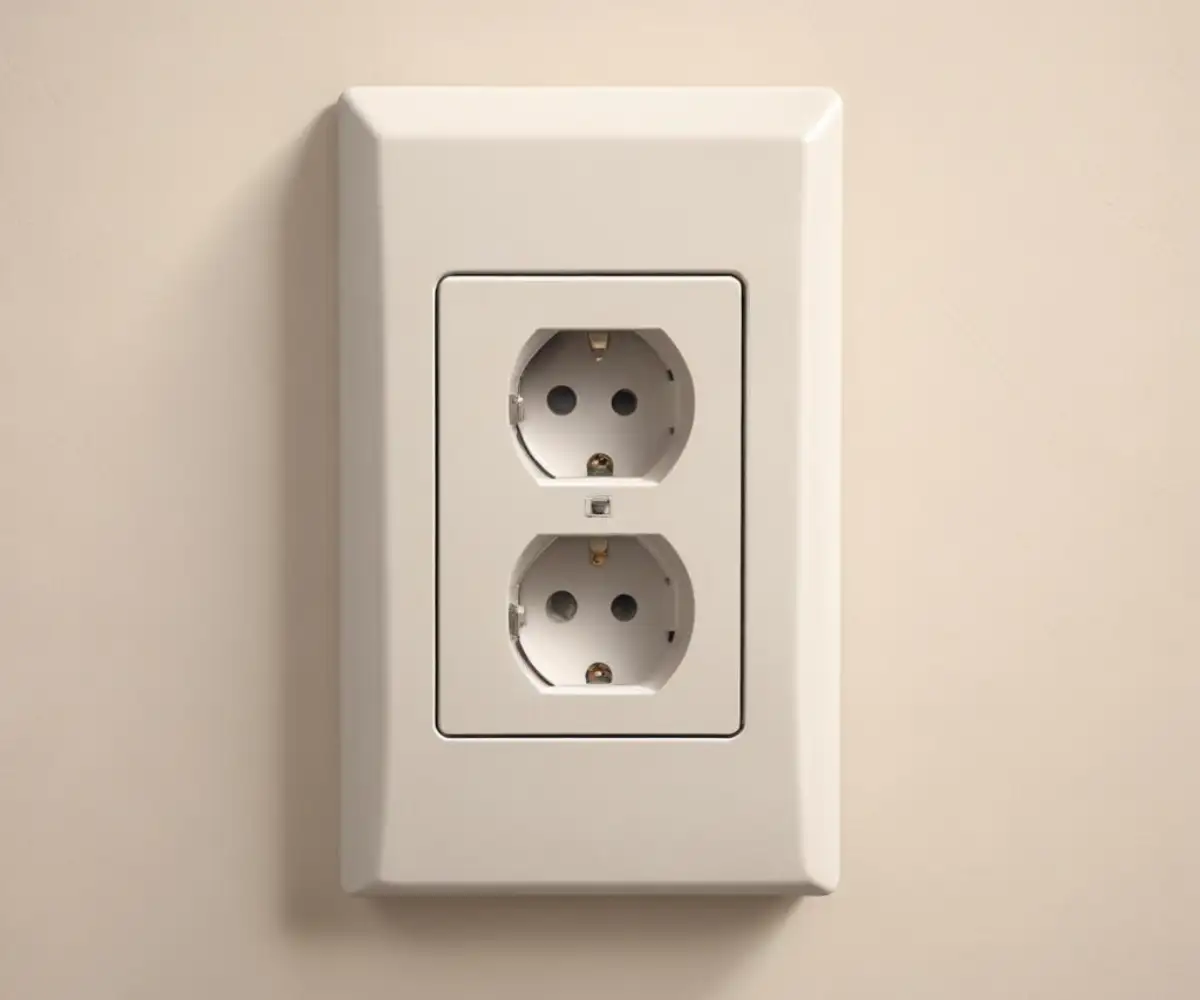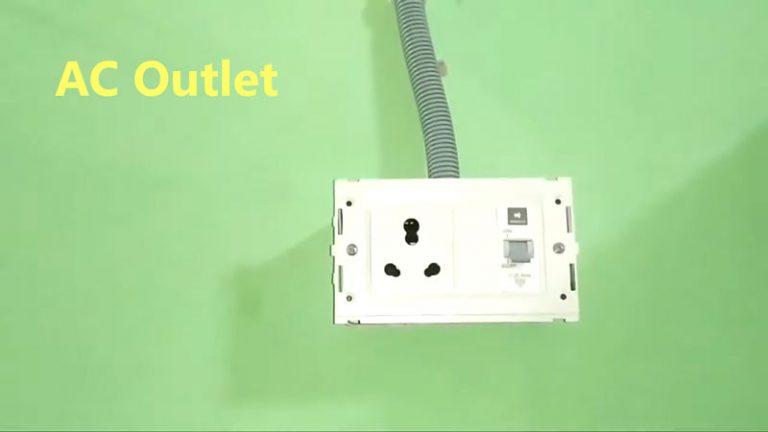Is Your 3-Prong Dryer Outlet a Ticking Time Bomb? The Truth
You move into a new home, ready to set up your laundry room, only to find a dryer outlet that doesn’t match your new appliance’s plug. It’s a common scenario: your modern dryer has a four-prong plug, but the outlet staring back at you only has three slots. This small difference raises a huge question: is a 3 prong dryer outlet safe?
The short answer is that while they were once the standard, they are no longer considered the safest option. This article unpacks the risks, explains the electrical science in simple terms, and provides clear, actionable solutions to ensure your laundry room is both functional and, most importantly, safe.
You'll Learn About
The Core of the Problem: Understanding Dryer Power Needs
Electric dryers are power-hungry appliances. Unlike most items in your home that run on a standard 120-volt circuit, an electric dryer requires a 240-volt circuit to generate the intense heat needed to dry clothes efficiently. This higher voltage is why they require a special, dedicated outlet.
This 240-volt service is delivered through two “hot” wires, each carrying 120 volts. In addition to these, the dryer also needs a path for the electrical current to return to the panel, known as the neutral wire, and a safety path in case of a fault, which is the ground wire. It’s the handling of these last two wires that marks the critical difference between older and modern installations.
A Look Back: Why 3-Prong Outlets Were the Standard
In homes built before the mid-1990s, 3-prong dryer outlets were the norm. These outlets were designed for a 3-wire circuit that consisted of two hot wires and a single wire that served as both the neutral and the ground. In this setup, the neutral wire was intentionally bonded to the dryer’s metal frame to provide a path for fault currents.
This configuration was deemed acceptable for many years. However, the electrical code is a living document, constantly updated to reflect new knowledge and improve safety. Recognizing a potential hazard, the National Electrical Code (NEC) updated its requirements in 1996. All new homes and electrical installations from that point forward were required to use a safer, 4-wire system for electric dryers.
The Hidden Danger of a Combined Neutral and Ground
The primary safety issue with a 3-prong dryer outlet lies in its reliance on a combined neutral and ground wire. While this system works fine under normal conditions, it can become incredibly dangerous if that single neutral/ground wire becomes loose, damaged, or broken.
If the connection is compromised, the electrical current seeking a path back to the panel can travel through the ground wire to the dryer’s metal casing. This means the entire exterior of your dryer—the door, the top, the sides—could become energized with 120 volts of electricity. Touching the dryer in this state could lead to a severe electrical shock or even electrocution.
This risk is precisely why the NEC mandated a change. A separate, dedicated ground wire provides a safe, reliable path for fault current that is independent of the neutral wire, significantly reducing the risk of the appliance’s frame becoming electrified.

The Modern Solution: Why 4-Prong Outlets Are Safer
The introduction of the 4-prong outlet was a direct response to the safety concerns of the 3-prong system. An outlet with 4 holes provides separate, distinct connections for each of the necessary conductors, creating a much safer installation.
Here’s the breakdown of a 4-wire system:
- Two Hot Wires: Each provides 120 volts to power the dryer’s heating elements, combining for 240 volts.
- One Neutral Wire: This provides a return path for the 120-volt components of the dryer, like the timer, drum motor, and control panel light.
- One Ground Wire: This is a dedicated safety wire. It is connected to the dryer’s frame and provides a direct path to the earth in the event of a short circuit. This ensures that a fault will trip the circuit breaker immediately, cutting off the power and preventing a shock hazard.
This separation is the key to modern electrical safety for large appliances. By isolating the grounding path, the 4-prong outlet provides a critical layer of protection that the older 3-prong design lacks.
Comparing 3-Prong and 4-Prong Dryer Outlets
To make the differences perfectly clear, let’s compare the two systems side-by-side. This table highlights the key distinctions and the evolution of safety standards.
| Feature | 3-Prong Outlet (Pre-1996) | 4-Prong Outlet (Post-1996) |
|---|---|---|
| Wires | Two Hot, One Combined Neutral/Ground | Two Hot, One Neutral, One Dedicated Ground |
| Safety Path | Neutral wire is bonded to the appliance frame | Dedicated ground wire is bonded to the appliance frame |
| Primary Risk | If the neutral/ground wire fails, the appliance frame can become energized, creating a shock hazard. | Significantly lower risk of shock as the ground path is separate from the current-carrying neutral. |
| Code Compliance | “Grandfathered” in for existing installations. Not permitted for new construction or circuit modifications. | Required by the National Electrical Code for all new installations. |
“Grandfathered In”: What It Means for Your Home
If your home was built before 1996 and has an existing, functional 3-prong dryer outlet, the NEC doesn’t require you to immediately rip it out and replace it. This is what’s known as being “grandfathered in.” The code allows these existing installations to remain in use.
However, this provision comes with a major caveat. If you modify that circuit in any way—for instance, moving the outlet to a new location—you are then required by code to upgrade the entire circuit to a modern, 4-wire system. The grandfather clause only applies to untouched, existing installations.
You Have a 3-Prong Outlet: What Are Your Options?
Discovering you have a 3-prong outlet when your new dryer has a 4-prong cord can be frustrating, but you have several solutions. It is crucial to choose the safest and most code-compliant path forward.
Option 1: Change the Dryer Cord (A Permissible but Less Safe Solution)
The most common and often easiest solution is to replace the 4-prong cord on your new dryer with a 3-prong cord. Most new dryers are designed to accommodate either cord type. This involves opening a panel on the back of the dryer and swapping the cords.
When doing this, it’s absolutely critical to follow the manufacturer’s instructions for connecting a 3-prong cord. This typically involves connecting a grounding strap or wire from the dryer’s neutral terminal to the metal frame of the appliance. This step re-establishes the combined neutral/ground path that the 3-prong outlet requires. Failing to do this correctly negates the safety system and can be extremely dangerous.
Option 2: Upgrade the Outlet and Wiring (The Safest and Best Solution)
The safest and most recommended option is to hire a qualified electrician to upgrade the circuit. An electrician can run a new 4-wire cable from your electrical panel to the laundry room and install a new 4-prong outlet. This brings your home up to modern safety standards and provides the best protection.
While this is more expensive than simply changing the cord, it is a permanent solution that ensures the safety of your home and family. It eliminates the inherent risks associated with the older 3-prong system entirely. If you ever notice issues like a strange crayon smell in house, which can sometimes be linked to electrical overheating, upgrading your wiring is a non-negotiable step.
What You Should NEVER Do
In the world of electrical work, shortcuts can have catastrophic consequences. There are a few “solutions” you might see online or hear about that are extremely dangerous and should be avoided at all costs.
- NEVER use a “cheater” adapter. You might find adapters that allow a 4-prong plug to fit into a 3-prong outlet. These devices are not safe for high-power appliances like dryers. They often create an improper ground connection, or no ground at all, putting you at high risk for electrical shock.
- NEVER install a 4-prong outlet on a 3-wire circuit. Simply replacing the receptacle without running a new 4-wire cable is deceptive and dangerous. It gives the appearance of a grounded outlet without providing any of the safety benefits. This misrepresentation can be even more hazardous than an honest 3-prong outlet.
- NEVER ignore signs of electrical problems. If you notice flickering lights when the dryer runs, scorch marks on the outlet, or the circuit breaker frequently tripping, these are warning signs. Similarly, if you see bent outlet covers, it could indicate overheating within the wall. Contact an electrician immediately to diagnose and fix the issue.
The Professional’s Perspective: When to Call an Electrician
While changing a dryer cord is a task some homeowners might feel comfortable with, any work involving the outlet or the circuit wiring should be left to a licensed professional. Electricians have the training, tools, and knowledge to perform the work safely and in compliance with all electrical codes.
Hiring an electrician is essential if:
- You want to upgrade your 3-prong outlet to a 4-prong outlet.
- You are unsure if your existing wiring is safe or adequate.
- You notice any signs of electrical trouble, such as heat, sparks, or scorch marks.
- You are performing any renovations that require moving or modifying the dryer circuit.
Final Verdict: Is a 3-Prong Dryer Outlet Safe?
A 3-prong dryer outlet is not inherently unsafe if it is in good condition and correctly wired. Millions of homes have used them for decades without incident. However, it is an outdated technology that lacks a critical safety feature found in modern electrical systems.
The 4-prong outlet provides a dedicated ground path that offers superior protection against electrical shock. While the code may not force you to upgrade an existing 3-prong outlet, choosing to do so is a proactive investment in your home’s safety. When it comes to the high voltage required by an electric dryer, embracing the modern standard is always the wisest choice.

